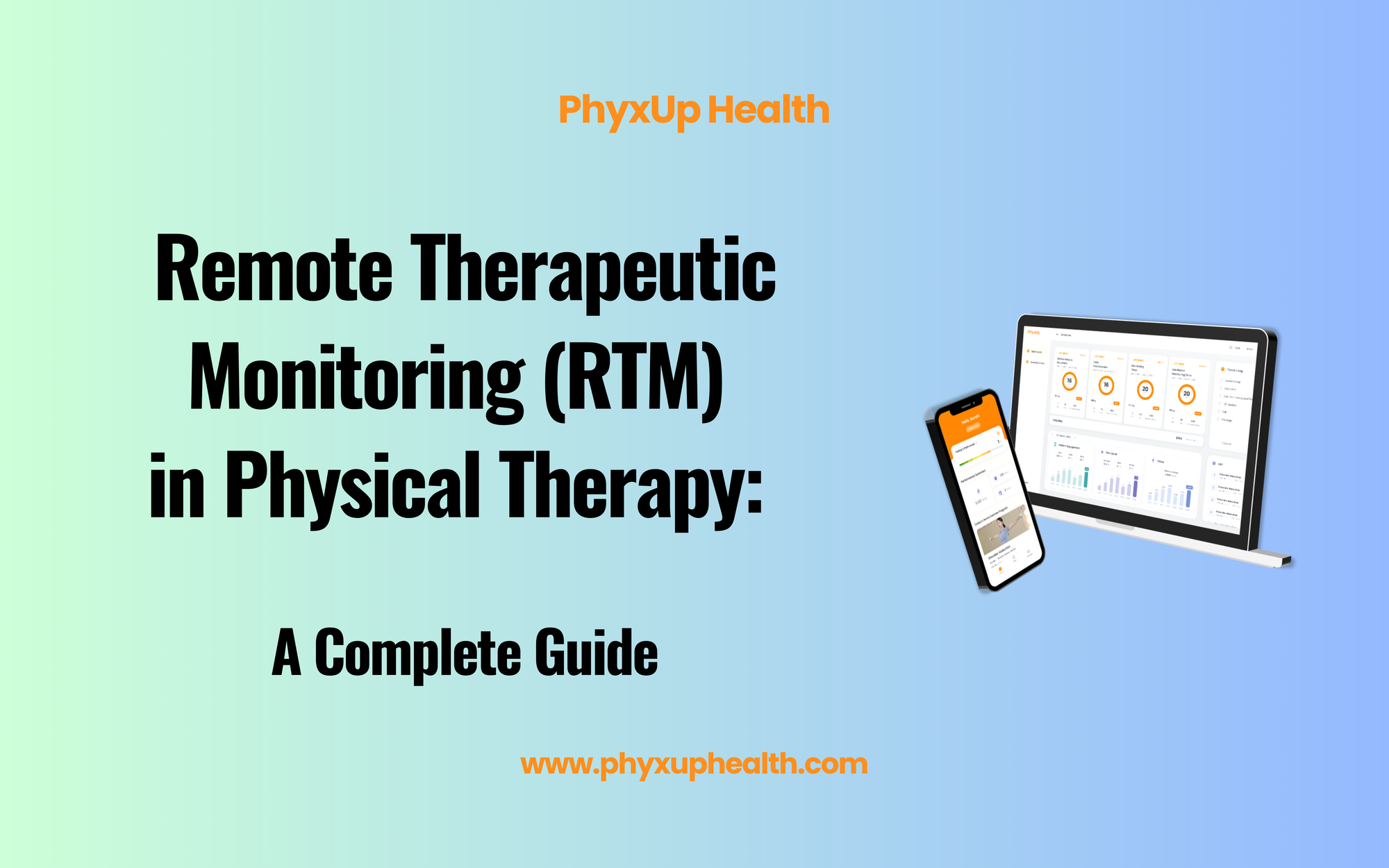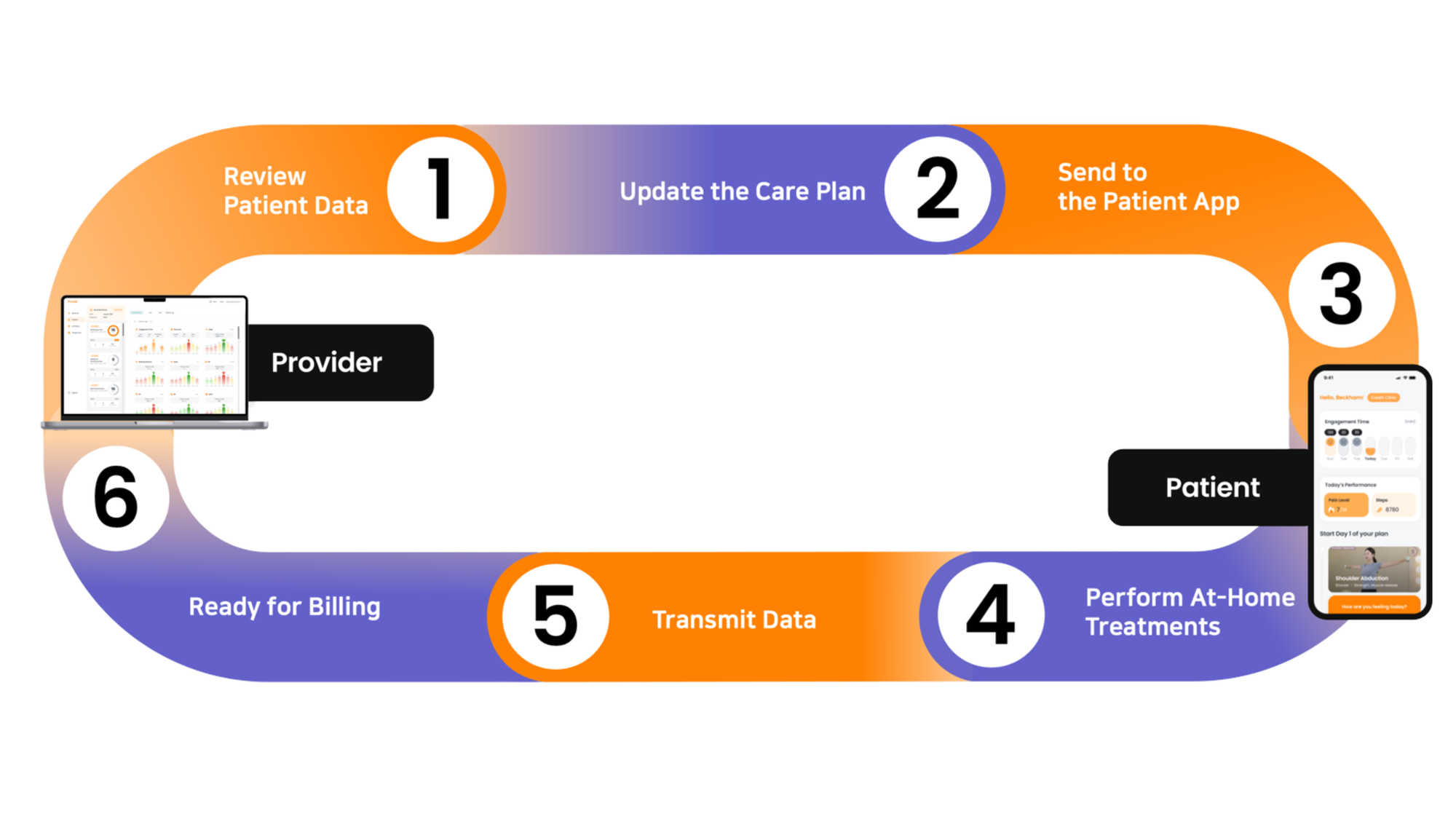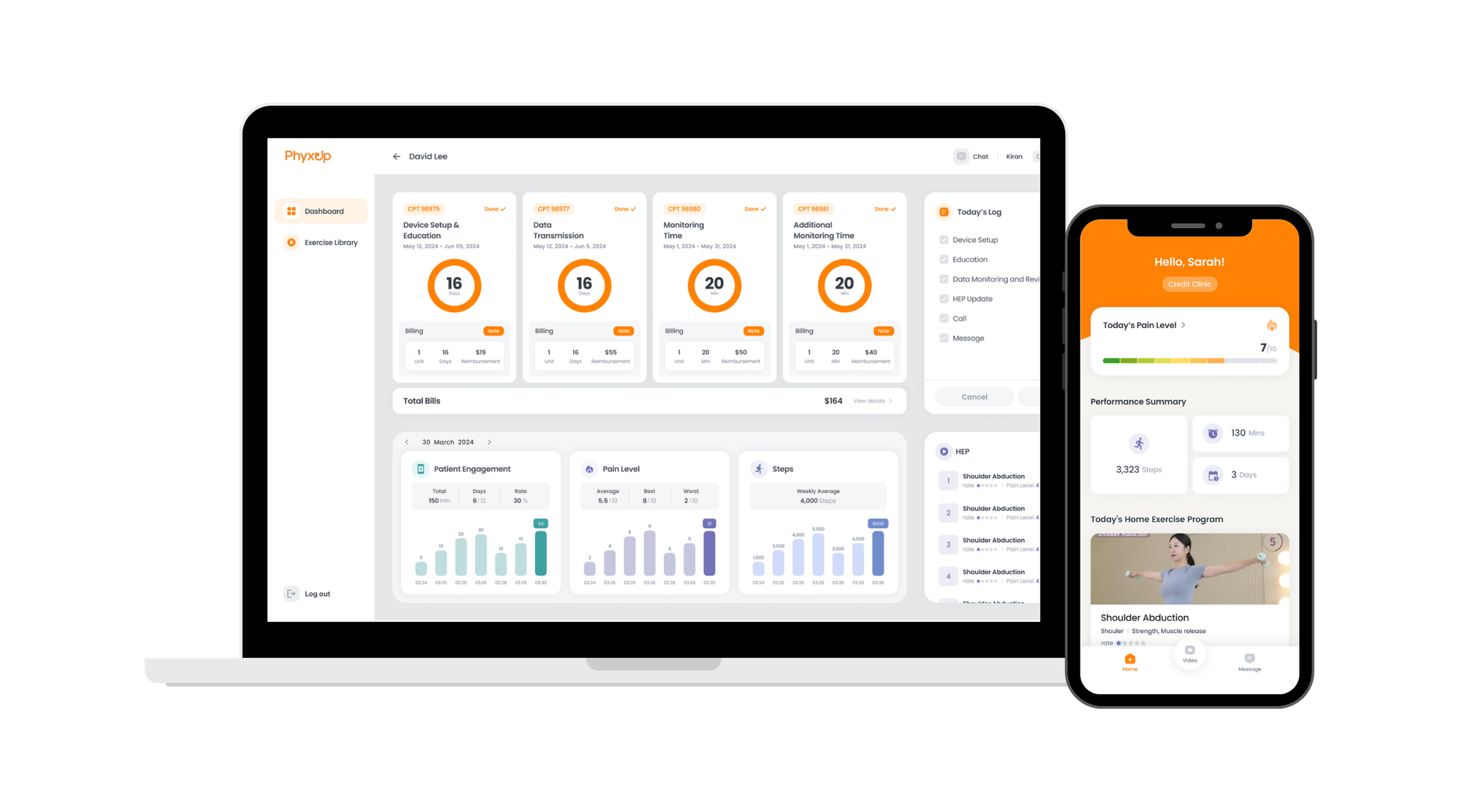Remote Therapeutic Monitoring (RTM) in Physical Therapy: A Complete Guide

Remote Therapeutic Monitoring (RTM) is reshaping the healthcare industry, particularly for physical therapy practices. RTM enables providers to monitor patient progress remotely through web and app platforms, ensuring better adherence to treatment plans and improving patient outcomes.
For private physical therapy clinics, RTM represents a significant opportunity to enhance patient engagement, streamline workflows, and create new revenue streams.
What is Remote Therapeutic Monitoring (RTM)?
RTM is a digital healthcare solution that leverages technology to track patients’ recovery and treatment adherence outside of traditional clinic visits. By using RTM apps and connected devices, healthcare providers can remotely monitor physical activity levels, pain progression, and therapy compliance, ensuring more personalized and effective care.
How RTM Works in Physical Therapy
Physical therapy relies on consistent exercise and rehabilitation programs to help patients recover. However, many patients struggle with adherence between sessions. RTM bridges this gap by enabling therapists to track progress, offer feedback, and make real-time adjustments to treatment plans without requiring frequent in-person visits.
RTM Utilizes Technology to Track:
- Exercise compliance – Ensuring patients complete prescribed Home Exercise Programs (HEPs).
- Pain progression – Monitoring fluctuations in pain levels.
- Range of motion & mobility – Assessing functional improvements over time.
- Patient feedback – Allowing direct communication for treatment adjustments.
With RTM, therapists can engage with patients outside the clinic, making care more personalized and proactive.
Billing for RTM in Physical Therapy
To successfully implement RTM in private practice, understanding billing and reimbursement is crucial. Medicare and many private insurers cover RTM services when properly documented using the correct CPT codes.
CPT Codes for RTM:
- 98975 – Initial setup and patient education on RTM device(s).
- 98977 – Remote monitoring of the musculoskeletal system, including device supply for daily recordings and data transmission.
- 98980 – Remote therapeutic monitoring treatment management services, requiring at least one interactive communication session with the patient during the calendar month (first 20 minutes).
- 98981 – Remote therapeutic monitoring treatment management services, an additional 20 minutes per month.
By leveraging these codes appropriately, physical therapy practices can generate additional revenue while improving patient care.

The Benefits of RTM for Private Physical Therapy Practices
1. Improved Patient Engagement & Adherence
RTM fosters accountability by keeping patients actively involved in their rehabilitation process. Features like reminders, progress tracking, and direct messaging help patients stay on track and maintain motivation.
2. Enhanced Treatment Outcomes
With real-time data insights, therapists can quickly identify potential issues, adjust treatment plans accordingly, and provide timely interventions. This leads to faster recovery times and better overall patient outcomes.
3. Increased Accessibility to Care
RTM eliminates geographical barriers, allowing patients in rural or underserved areas to receive high-quality care without frequent travel. This expands a clinic’s reach without requiring additional physical locations.
4. New Revenue Opportunities
Many insurance providers, including Medicare, reimburse RTM services, offering an additional income stream for private practices. By incorporating RTM, clinics can maximize revenue while providing enhanced patient care.
How to Implement RTM in a Private Practice
Step 1: Assess Viability
Before adopting RTM, evaluate its potential benefits for your practice. Consider factors like cost, return on investment (ROI), and patient demographics. A small pilot program can provide valuable insights into feasibility.
Step 2: Choose the Right Technology
Selecting an RTM platform that is intuitive, HIPAA-compliant, and tailored for physical therapy is crucial. Look for software that integrates seamlessly with your current practice management system. PhyxUp Health, for example, provides real-time patient tracking, automated documentation, and seamless reimbursement support to simplify RTM implementation.
Step 3: Train Your Staff
A successful RTM implementation requires proper staff training. Therapists should understand how to use the platform, interpret data, and incorporate insights into treatment plans. Administrative staff should also be trained to handle billing and reimbursement.
Overcoming Common RTM Challenges
Managing Costs
Small clinics may worry about the upfront costs of RTM technology. To mitigate expenses, look for scalable pricing plans and explore reimbursement options through insurance providers.
Ensuring Data Privacy and Security
Patient data protection is essential. Choose an RTM solution that complies with HIPAA and other relevant regulations, and educate staff on best practices for handling sensitive information.
Encouraging Patient Compliance
Patients may be hesitant to adopt RTM. Overcome this by clearly explaining the benefits, providing user-friendly tools, and maintaining regular check-ins to encourage engagement.
RTM Success Stories in Physical Therapy
Case Study 1: Rural Practice Expansion
A small clinic in rural Wisconsin implemented RTM to monitor post-surgical recovery. By using a motion-tracking app and virtual consultations, patient adherence increased by 30%, and overall retention improved by 20%.
Case Study 2: High-Performance Sports Clinic
An urban sports rehab clinic integrated wearable sensors to track athletes' recovery progress. This data-driven approach attracted new clients and boosted revenue through specialized RTM services.
Key Takeaways for Private Practices
- Start with a pilot program to test RTM effectiveness before full-scale adoption.
- Educate patients on RTM benefits to ensure engagement and compliance.
- Use data insights to refine treatment plans and demonstrate value to patients and insurers.
Steps to Find the Right RTM Solution
Identify Your Clinic’s Needs
Assess what your practice requires from an RTM solution, whether it’s automated patient monitoring, seamless billing integration, or enhanced patient communication.
Evaluate RTM Platforms
Look for an RTM solution that is intuitive, HIPAA-compliant, and designed specifically for physical therapy. Platforms like PhyxUp Health provide real-time patient tracking, automated documentation, and seamless reimbursement support to simplify RTM implementation.

Ensure Integration with Your Workflow
Choose a platform that integrates smoothly with your existing EMR system and fits naturally into your clinic’s daily operations. PhyxUp Health, for example, streamlines patient engagement and billing, making RTM easy to adopt without adding administrative burden.
Test with a Pilot Program
Start with a small group of patients to gauge effectiveness and refine your workflow before fully rolling out RTM in your practice.
By selecting the right RTM solution, physical therapy clinics can enhance patient engagement, simplify compliance, and unlock new revenue opportunities.
The Future of RTM in Physical Therapy
The adoption of RTM is expected to grow as technology advances and reimbursement policies evolve. Artificial intelligence (AI) and machine learning will further enhance data analysis, allowing for even more personalized treatment plans. As the industry shifts toward value-based care, RTM will play a crucial role in improving patient outcomes while optimizing clinic efficiency.
